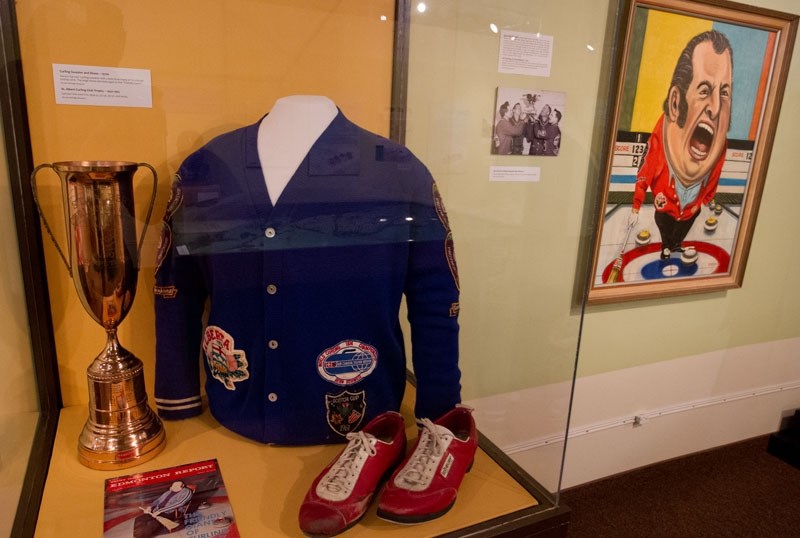On his children’s show, Mr. Rogers always used to sing, “Who are the people in your neighbourhood?” The MusĂ©e HĂ©ritage Museum now has an interesting answer to that question.
The Street Where You Live takes all the names on the road signs in your neighbourhood and brings out the people from our city’s history. Perhaps you’ve always wondered who St. Anne really was or who was behind Gervais Road or where the ‘Carnegie’ from Carnegie Drive came from. Well, this is the exhibit just for you.
Curator Joanne White explained that this is exactly what museums do best: they make history interesting and relevant to people in the present day.
Plus, it’s not that heavy a subject.
“It’s nice because you can pop in and out as it were and get a little bit of information and find out about something that catches your eye. You can get tidbits of knowledge about your community.”
Unlike Edmonton and other communities with numbers on the signs, St. Albert prefers to honour people who have made contributions to the community, while some of the street names are for trees and inanimate objects such as for Aspen Place or Wedgewood Place.
It’s a catalogue of interesting and unique individuals including the early MĂ©tis who lived and worked in the area, to the founders of the St. Albert mission, to business people and community builders, former mayors, and other important citizens.
After Sir Winston Churchill died in 1965, the then-town of St. Albert decided to rename both St. Louis and McKenney Streets. A letter from Churchill’s widow, Clementine, is on display as it was offered as a thank you to the mayor and townspeople.
“I believe that there’s about 690 streets,” White explained.
Gervais Road, in case you’re under 50 and still wondering, was named after Hec Gervais, this city’s favourite son of curling. The former king of the Brier and two-time world champion was once well known as “The Friendly Giant.”
The artist Vandenburg depicts him in a cartoonish oil painting as he was in his prime: with majestic sideburns and standing on the house wearing his lucky sweater and screaming at his rink to hurry hard.
The museum has this as well as other Gervais pieces in its archives. White said that this was a great opportunity to bring out the painting.
“It’s hard to find a good time to use this but this was perfect.”
Tragically, there isn’t a display on the origin of Hayes Place.
The good news is that the museum’s past publication, A History of the Street Names in St. Albert, offers up the details on the Hayes family, namely George Morris Hayes and his brother Robert, both of Essex, England. They came to Canada to find land to settle and George eventually found his place in St. Albert, with Robert not too far off. George and his wife, Brenda, had six children and that seems to be the extent of their contribution to the city.
Hayes Place is located just off of Harwood Drive in the Heritage Lakes district.
There’s no relation, by the way, but I still find it to be pretty interesting stuff. You can read more from this fascinating document on the city’s website at www.stalbert.ca.
The Street Where You Live exhibit will be on display until Nov. 15. The museum will also be hosting a special block party for you and all your neighbours on Oct. 8 from 6 to 8 p.m.
Call the museum at 780-459-1528 or visit its website at www.museeheritage.ca for more details.




